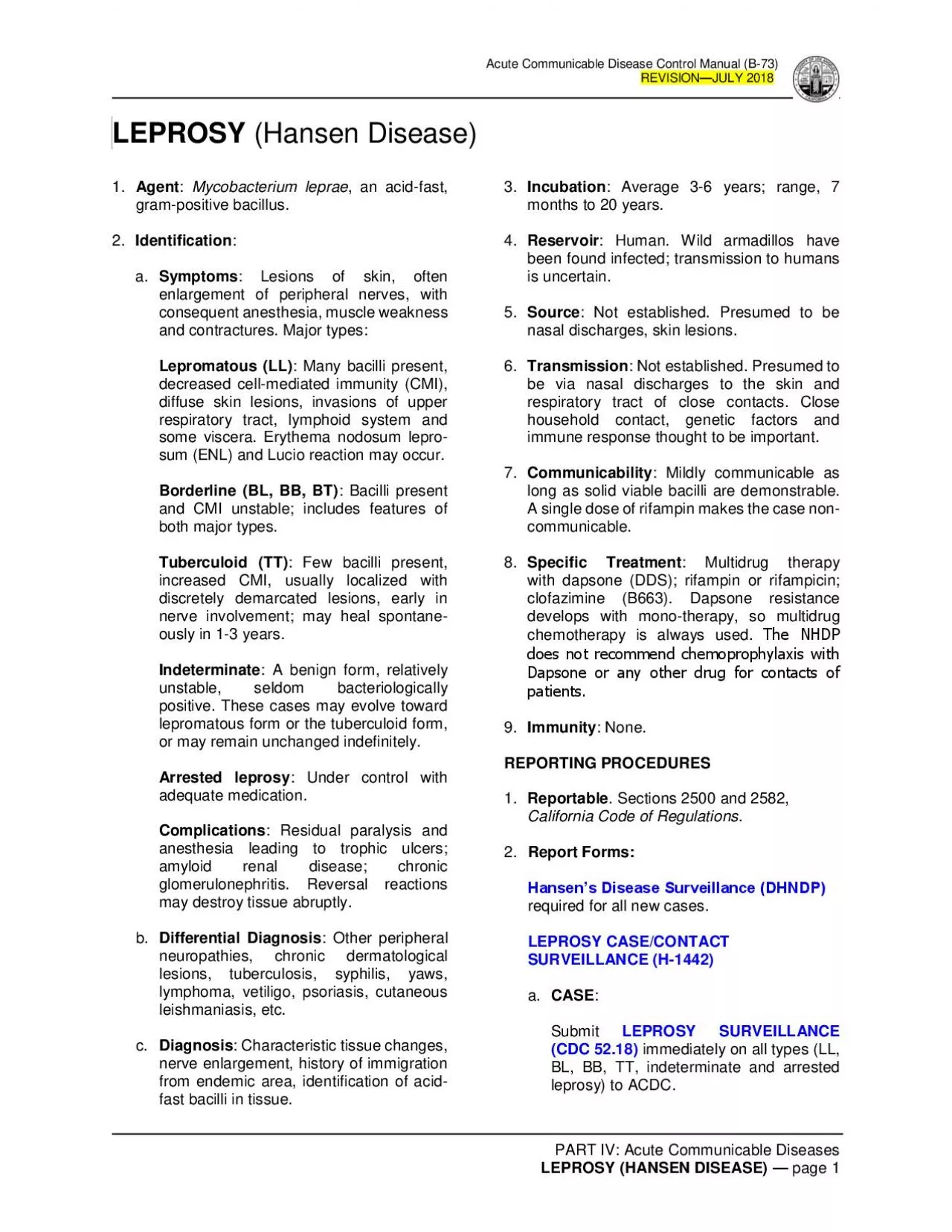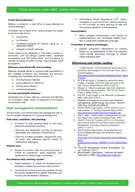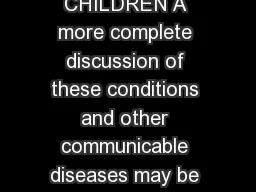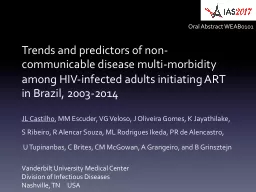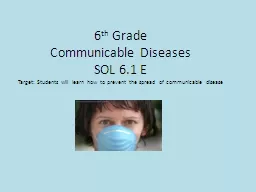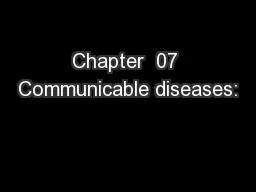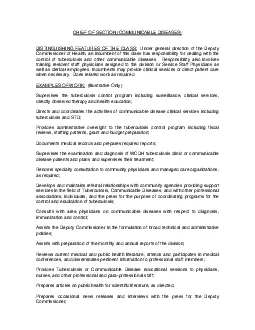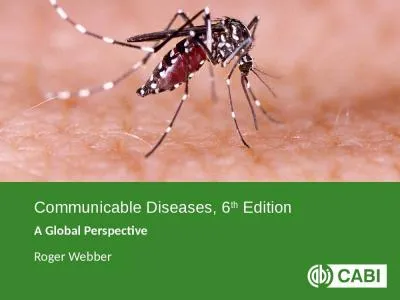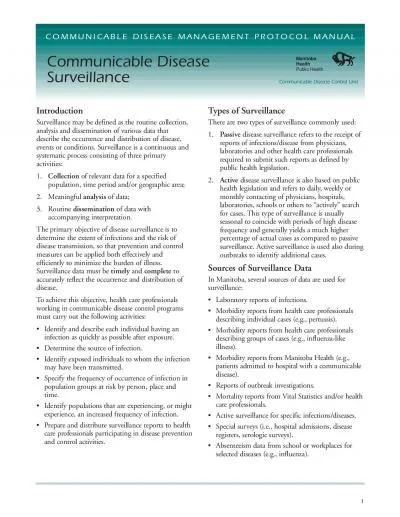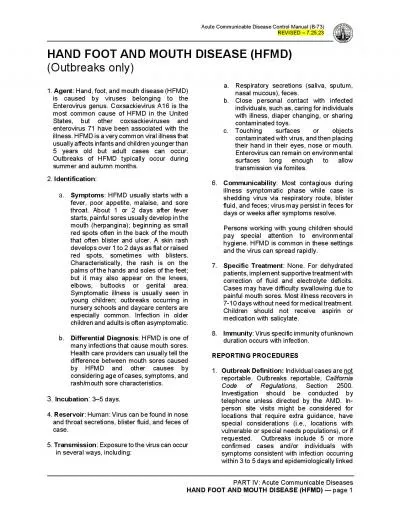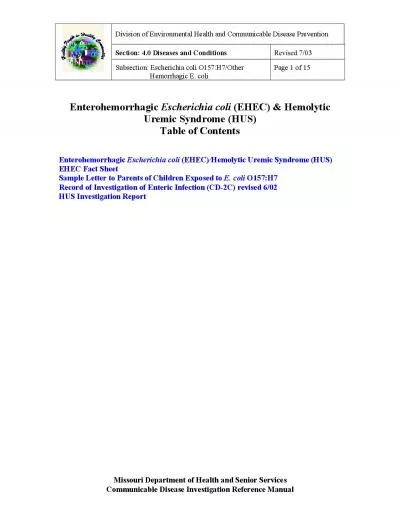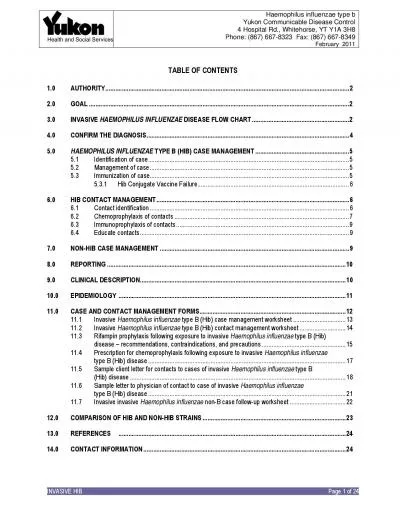PDF-Acute Communicable Disease Control Manual B
Author : joanne | Published Date : 2022-09-05
73 REVISION JULY 2018 PART IV Acute Communicable Diseases LEPROSY HANSEN DISEASE page 1 LEPROSY Hansen Disease 1 Agent Mycobacterium leprae an acid fast gram positive
Presentation Embed Code
Download Presentation
Download Presentation The PPT/PDF document "Acute Communicable Disease Control Manua..." is the property of its rightful owner. Permission is granted to download and print the materials on this website for personal, non-commercial use only, and to display it on your personal computer provided you do not modify the materials and that you retain all copyright notices contained in the materials. By downloading content from our website, you accept the terms of this agreement.
Acute Communicable Disease Control Manual B: Transcript
Download Rules Of Document
"Acute Communicable Disease Control Manual B"The content belongs to its owner. You may download and print it for personal use, without modification, and keep all copyright notices. By downloading, you agree to these terms.
Related Documents

